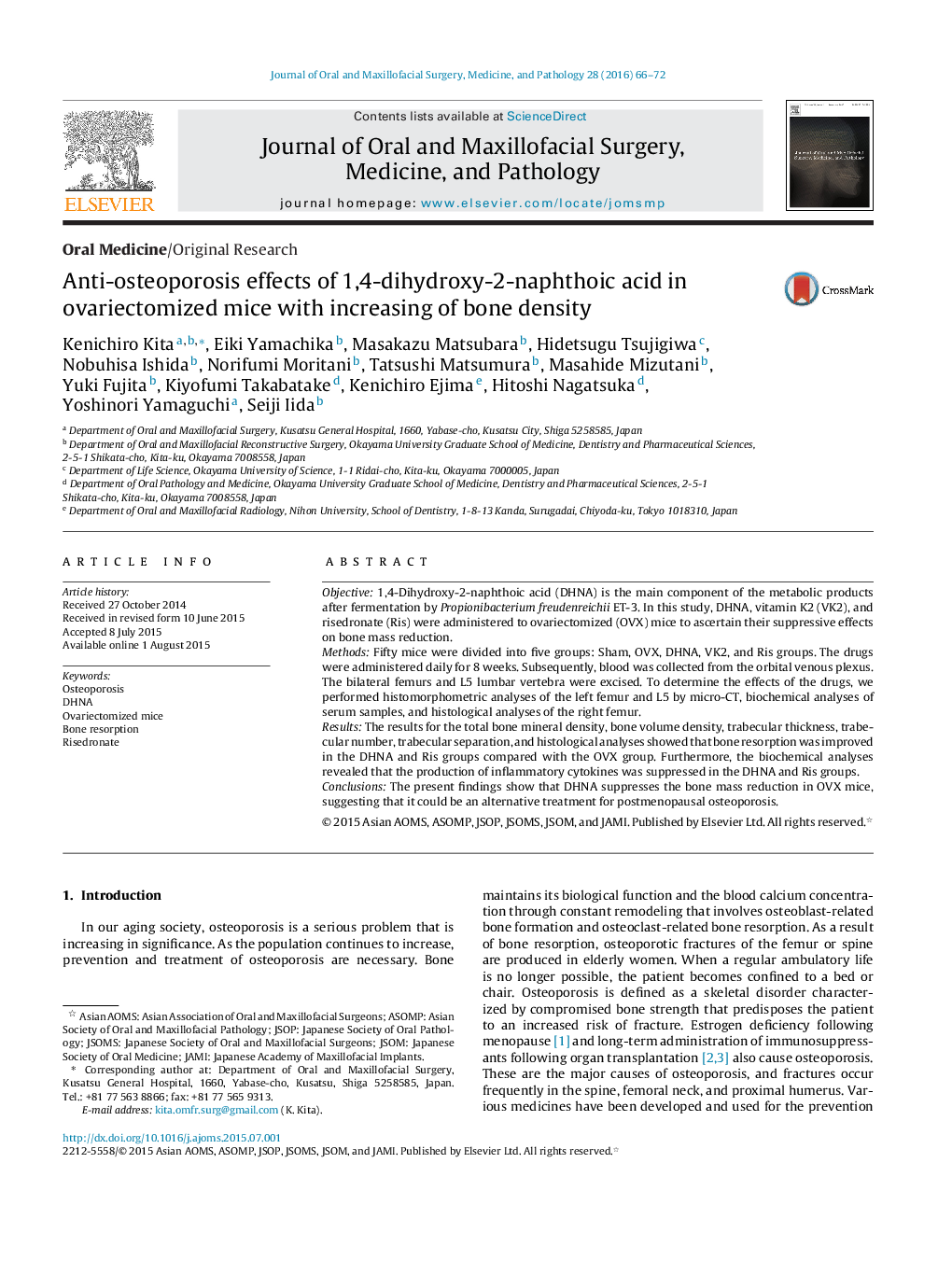| Article ID | Journal | Published Year | Pages | File Type |
|---|---|---|---|---|
| 3160367 | Journal of Oral and Maxillofacial Surgery, Medicine, and Pathology | 2016 | 7 Pages |
Objective1,4-Dihydroxy-2-naphthoic acid (DHNA) is the main component of the metabolic products after fermentation by Propionibacterium freudenreichii ET-3. In this study, DHNA, vitamin K2 (VK2), and risedronate (Ris) were administered to ovariectomized (OVX) mice to ascertain their suppressive effects on bone mass reduction.MethodsFifty mice were divided into five groups: Sham, OVX, DHNA, VK2, and Ris groups. The drugs were administered daily for 8 weeks. Subsequently, blood was collected from the orbital venous plexus. The bilateral femurs and L5 lumbar vertebra were excised. To determine the effects of the drugs, we performed histomorphometric analyses of the left femur and L5 by micro-CT, biochemical analyses of serum samples, and histological analyses of the right femur.ResultsThe results for the total bone mineral density, bone volume density, trabecular thickness, trabecular number, trabecular separation, and histological analyses showed that bone resorption was improved in the DHNA and Ris groups compared with the OVX group. Furthermore, the biochemical analyses revealed that the production of inflammatory cytokines was suppressed in the DHNA and Ris groups.ConclusionsThe present findings show that DHNA suppresses the bone mass reduction in OVX mice, suggesting that it could be an alternative treatment for postmenopausal osteoporosis.
